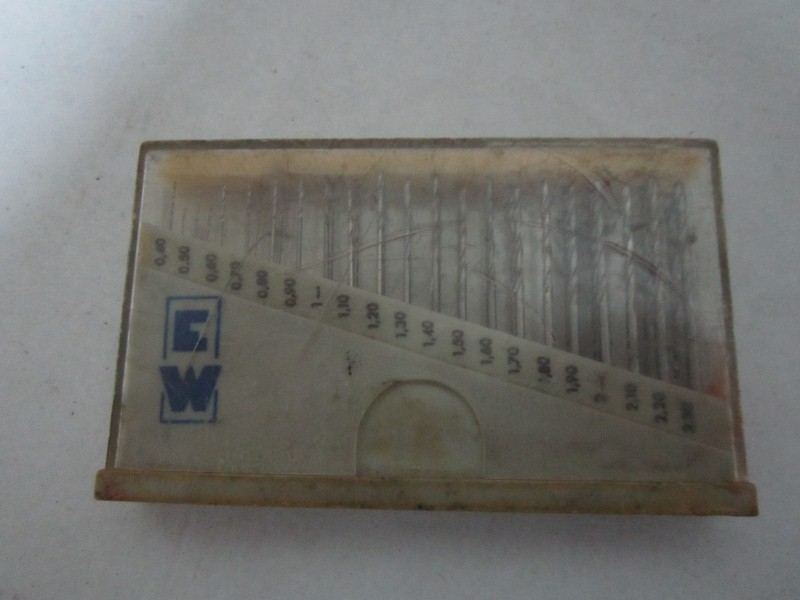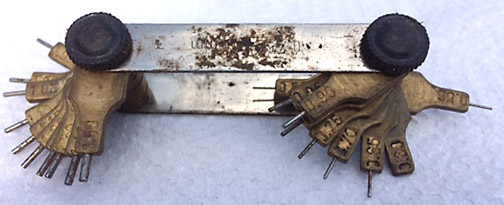Printable Version of Topic
Click here to view this topic in its original format
914World.com _ 914World Garage _ drilling carb jets
Posted by: larryM Oct 8 2018, 09:39 PM
inspired by recent thread on tuning webers for 2.7
http://www.914world.com/bbs2/index.php?showtopic=333667
many carburetor books, including Holley, advise against self drilling jets
- pretty much all agree on the same issues
"As to drilling jets, .... Whenever a jet is drilled, PLEASE file off the number so the next guy isn't driven to drink trying to figure out what happened!"
here is a relevant forum that summarizes it
http://forums.sohc4.net/index.php?topic=3713.0
"speaking as a machinist, if you were to open up the diameter of a jet, you should get yourself a lathe, chuck it up and remove unwanted material with a strait-flute reamer. the mental image of some yokle with a makita screw gun drilling out something as precision as a carb jet is disturbing to me. for one: twist drills are not as accurate as you think, sure they work good for drilling out the cavity in your mom's last tooth, but they dont cut perfectly on center and can only be trusted within a few thousandths of an inch to a sixty-fourth depending on the diameter of the drill. B: twist drills dont leave a nice surface finish, and a drill that small going thru brass, to obtain a decent finish you would have to turn it insanely fast, upwards of 4000 rpm.
. If you MUST practice home-dentistry on your carb jets, use kerosene as a cutting fluid, brass does not like to get hot, and thicker oils do not evaporate off and dont posess the cooling properties that kerosene does. ... as i've said to so many people, so many times, "someone who went to school a lot longer than you said to do it this way, and the owner of the company agreed, why dont you?" here's to putting our faith in engineers and leaving the duct-tape and safety-pins to MacGuyver!"
AND
"Twist drills do not make round holes. And, they often push metal rather than cutting it, if not maintained sharp. Have you never deburred a hole? Where did the burrs come from? Also, twist drills make holes bigger than their shank size. Round holes are made with reamers or are cast, possibly stamped in a die, as such.
The jet orifice is not simply a hole size. If you use magnification, you will see that the jet is ramped both into and out of the restriction orifice, and the orifice wall is rounded, not flat. The reason is that these forms help to keep the fluid flow in a laminar, non-turbulent manner over a wide range of fluid speeds. Stepped orifice walls will introduce turbulence, often in a modal fashion related to fluid speed or the pressure difference between the orifice inlet and outlet.
You've probably seen this effect with a garden hose nozzle, where at low pressure the outgoing stream is solid, but when the pressure is increased, an air pocket begins to appear at it's output. When the pressure is increased more, the solid stream begins to flail about wildly.
Drilled jets often flow LESS at holes sizes larger than smaller sized properly formed orifices, when subjected to high flow rates. Precision, well formed, holes are seldom achieved with $3 tooling, unless you are not measuring, or not looking very closely."
fwiw - ebay has 180 Weber mains for $10-$15 ea - (which i just ordered) - what's our time worth????
Posted by: bulitt Oct 9 2018, 02:56 AM
The advantage to drilling a jet (particularly to a broke College kid) was for short term tuning not long term operation. Jet it to proper Af ratio then order new jets for regular driving.
Before the internet it would take weeks to receive new jets.
Back in the 70's there was about one supplier in the US. Forza in Florida. You mailed him cash, he sent you jets.
Not only did I drill my own jets, I would solder them closed and redrill them for testing. You did what you could, with what you had.
No AF meters back then...out in the Farm roads to do a plug cut. Read the plugs, rejet, drink some beer. Great times.
Still have the drill kit. 
Posted by: GregAmy Oct 9 2018, 05:12 AM
FWIW, this is why I do not drill jets. And lack of proper ID is why I will generally not use used jets unless I know their history.
And with mains and idles for Dell DRLAs available for $12/set of 4 (pumps for $26) and 2-day shipping, it really doesn't make economic sense anyway.
Posted by: BK911 Oct 9 2018, 07:24 AM
I have measured brand new jets and have found several brand new complete sets that were marked incorrectly.
So now I always measure before I use them.
Posted by: worn Oct 9 2018, 11:01 AM
The real question to me would be do you have a lathe and tiny reams? If so, I don't see why home machining wouldn't work. One might need to create a fixture for holding the jet in the lathe. I like doing this sort of thing, but usually it is easier to buy things.
Posted by: gandalf_025 Oct 9 2018, 11:12 AM
Back in the 70’s I bought a kit to ream carb jets.
Kit had different size files and a set of feeler gauges
to measure the jets before and after.. Seemed pretty accurate
back then...
Couldn't find the reamers on short notice, but did find the gauge..
Posted by: rhodyguy Oct 9 2018, 11:23 AM
Good thread. Very informative. Esp the 'ramping' aspect.
Posted by: porschetub Oct 10 2018, 11:58 PM
Good thread. Very informative. Esp the 'ramping' aspect.
Had some dealings with a "real carb" guy I used he said as long as you don't go too much bigger when drilling,however he had all the right tools,half size jets are easily bought on ebay from alfa1750 ,stock sizes are .5 increments he supplies those half sizes and vents sized between stock sizes also for all webers and zeniths.
Good products ,great pricing and shipping and other parts you will not find elsewhere.
Jets are brass and don't drill easily and can result in a broken drill bit,the real small sizes are prone to this.
Powered by Invision Power Board (http://www.invisionboard.com)
© Invision Power Services (http://www.invisionpower.com)
